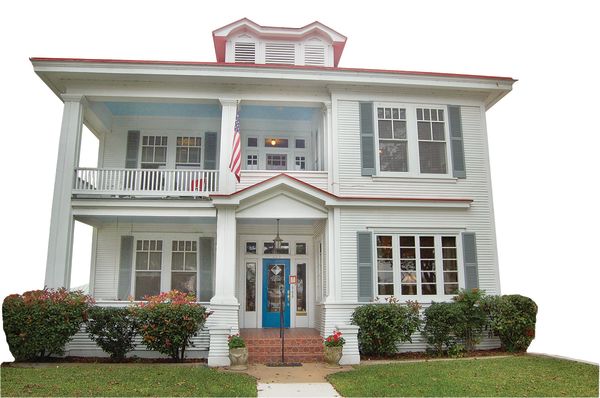
When 120 German settlers founded Fredericksburg in 1846, each received a town lot and 10 outlying acres. On Saturdays they came to town along a Main Street so wide they could turn their teams of oxen around. They traded goods at the market—then stayed over at their Sunday Houses in anticipation of church. A few original Sunday Houses remain tucked into the multi-block National Historic District around Main Street, an imposing thoroughfare still rich with Texas Hill Country commerce. Houses variously exhibit German fachwerk, are built of both native limestone and a local manmade stone called Basse block, or interpret Prairie School architecture; the town is a compendium of Western domestic architecture ca. 1848–1915.
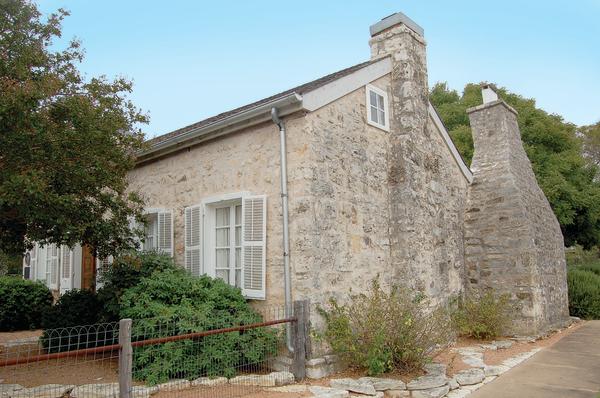
LOCAL STONE was used to build the John Peter Tatsch House in 1856; residents love the Texas-sized chimney that serves the rear kitchen. Tatsch came from Germany and built the house himself. This master cabinetmaker’s work is prized by collectors of Texas primitive furniture.
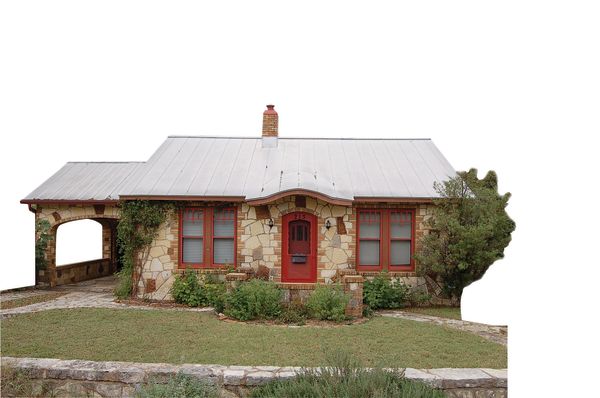
STONE BUNGALOW: Fredericksburg’s tradition of stone construction suited the tenets of the Arts & Crafts movement; here stone was used expressively for a storybook look. The early 20th-century cottage is small but well detailed, with a hood over the front door, unusual period-style windows, and a porte cochere for the side entry.
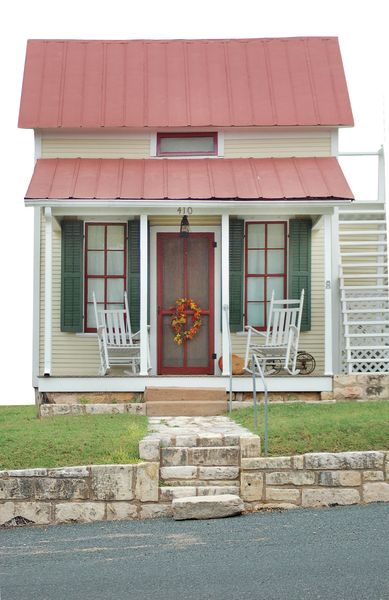
A SUNDAY HOUSE: Sunday Houses are unique to the German immigrant culture of the Texas Hill Country. In reverse of the old European tradition of living in town while working the rural farms, early German settlers made their main homes on the farm acreage. On their town lots, they erected Sunday Houses for overnight stays. They were built into the 20th century, as evidenced by the August Weber House of 1904.
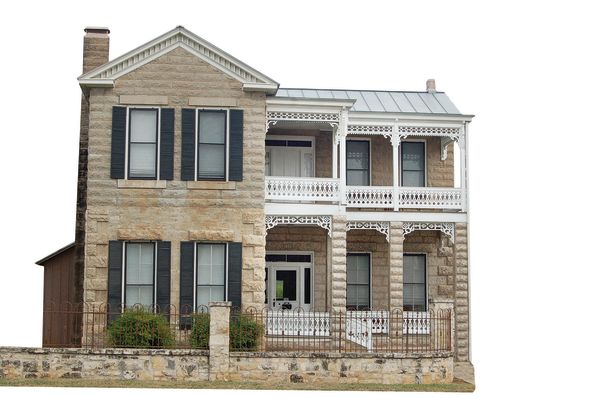
BASSE BLOCK: This house near the center of town started life as a one-storey limestone block house with corner quoins and tall four-over-four windows. During the early 20th century, a second storey built with cement Basse blocks was added, along with an ell. The gingerbread pattern on the porches is replicated all over this town.
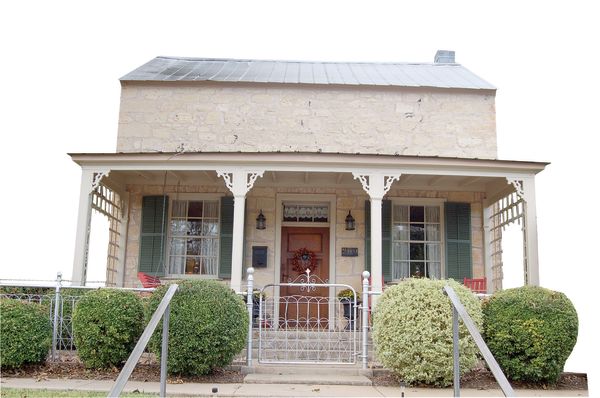
NATIVE LIMESTONE: The Heinrich Bierschwale House was built in 1872–73 by a German immigrant who taught in the rural schools of Gillespie and Mason counties. He later served as county and district clerk in Gillespie County. Bierschwale and his wife, Margarete, had nine children. The house remained in the family for over a century. The two-storey vernacular house built of native limestone features a full-facade front porch with bracketed columns and six-over-six windows.
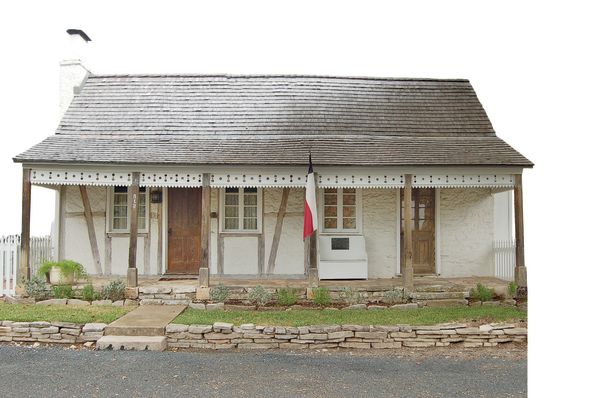
GERMAN FACHWERK: The fachwerk or half-timbering of Fredericksburg’s German heritage is in evidence throughout the historic district. A prominent example of the construction method is visible at the Krieger–Geyer House, built by one of the original settlers, Adam Krieger, ca. 1848. The front porch, with pierced-work decoration under the roof eave, probably dates to about 1880, when two back rooms were added to the diminutive structure.







